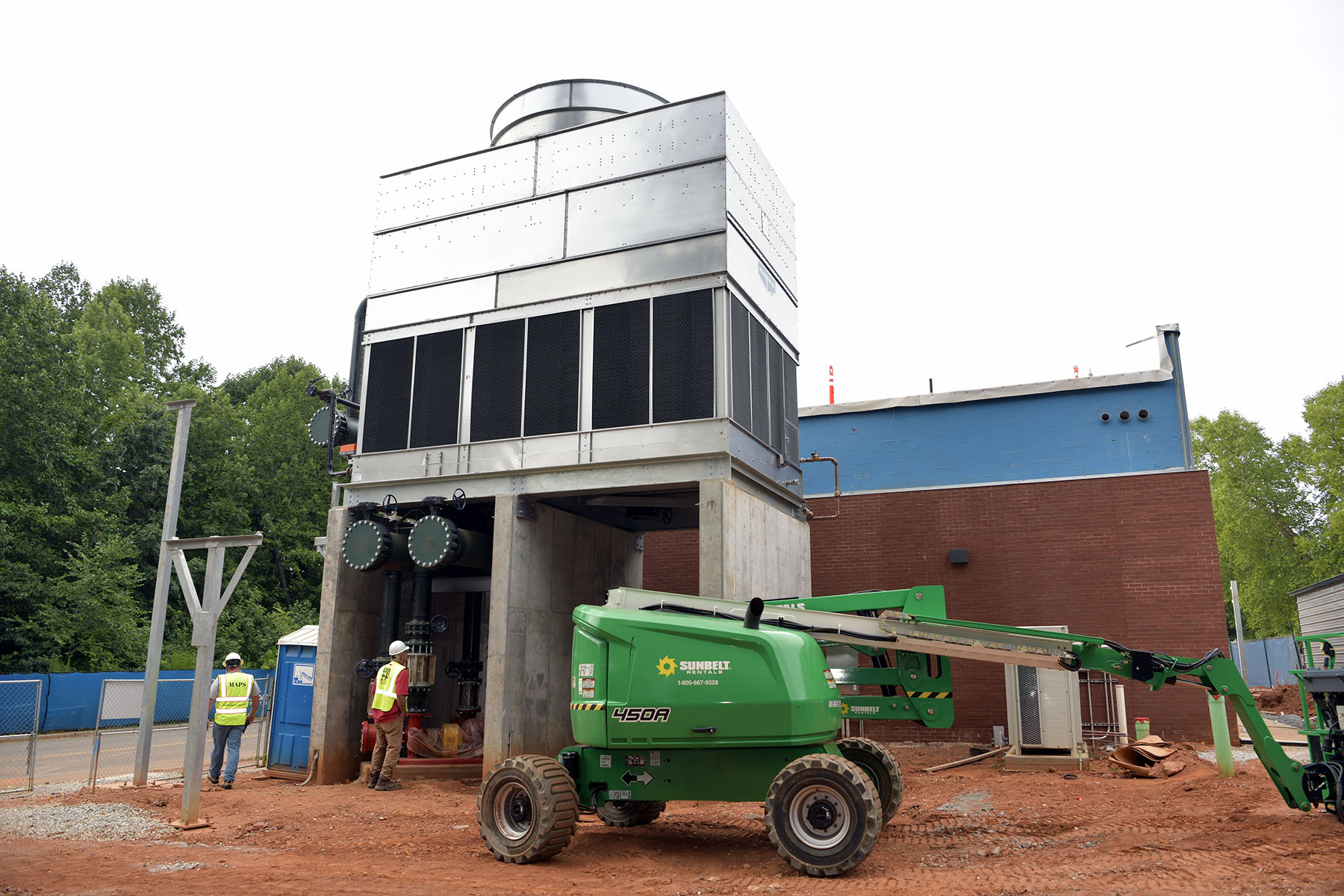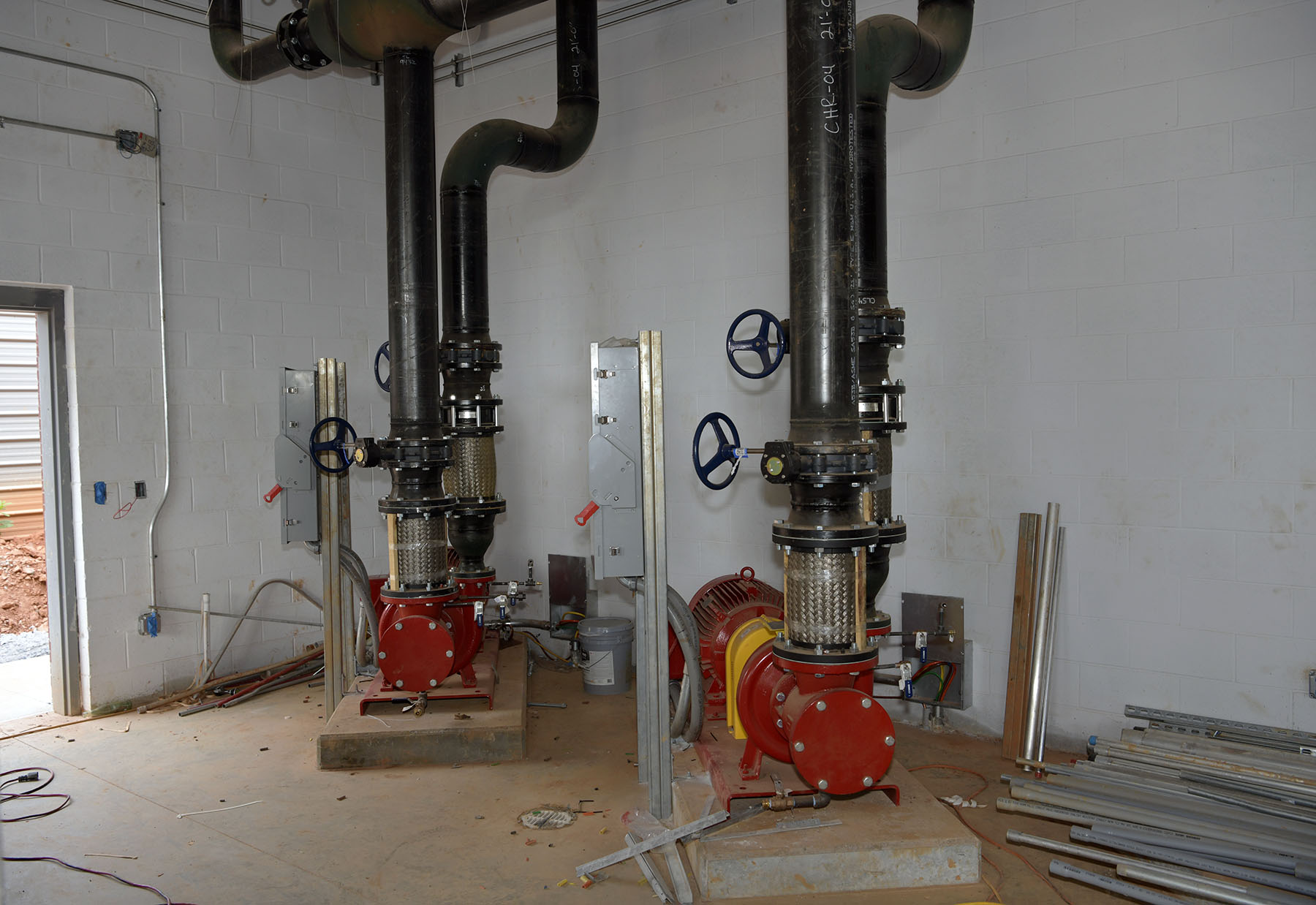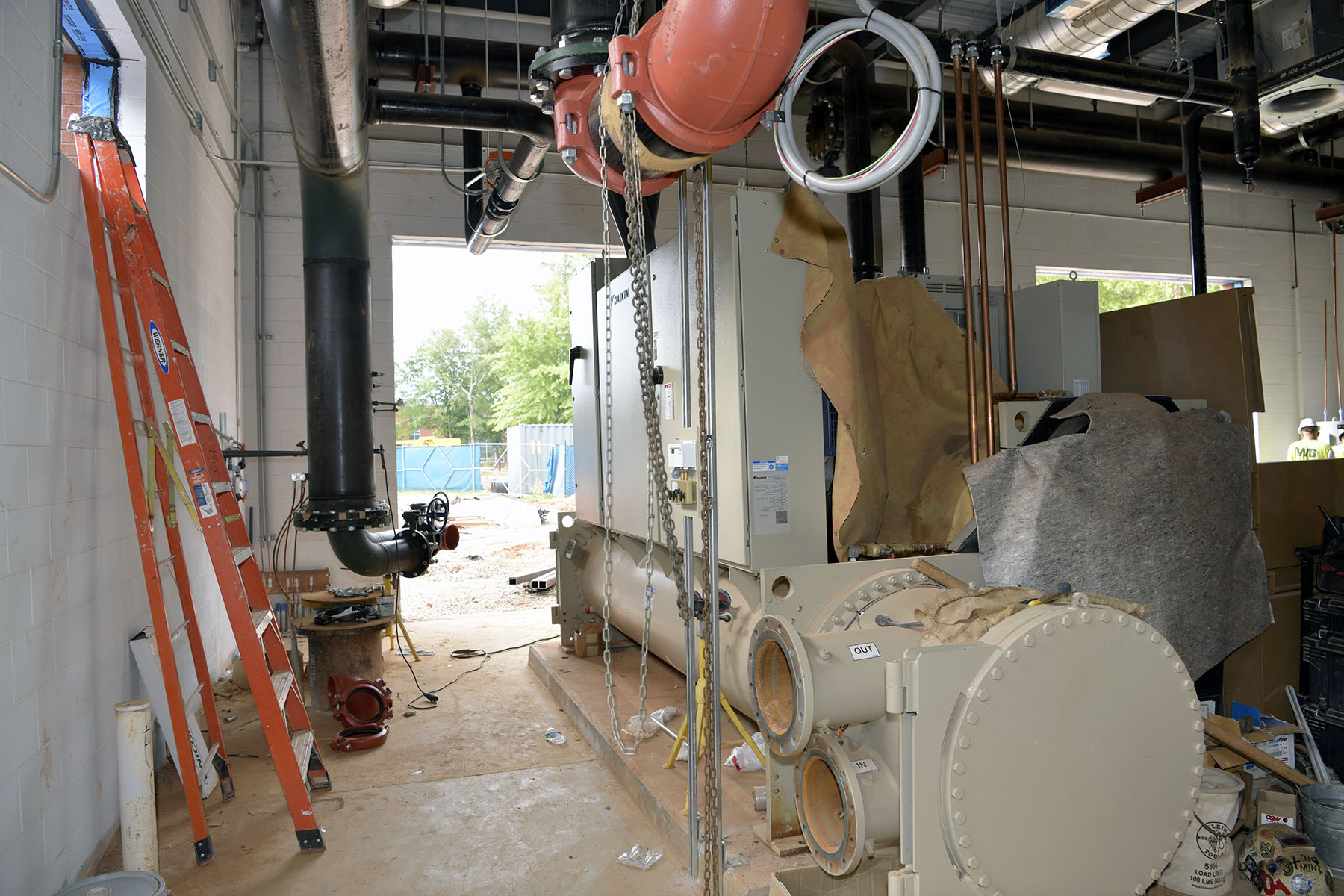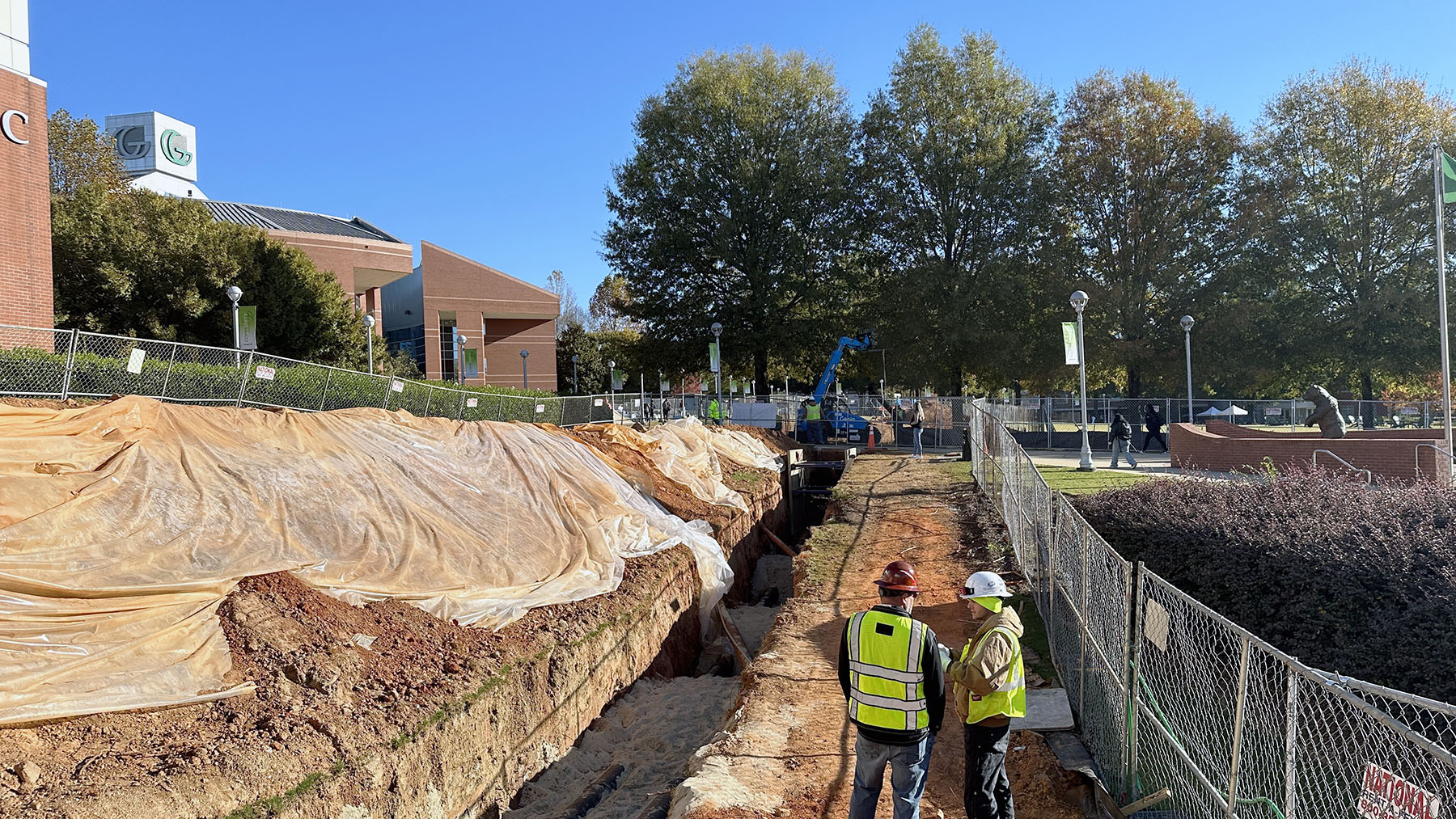news
Georgia Gwinnett College stays ‘chill’ while reducing electric consumption

During the dog days of summer, the temperatures soar, and so do electric bills. At Georgia Gwinnett College (GGC), the buildings remain comfortably cool thanks to a project that started 10 years ago.
GGC’s initial campus buildings were constructed with each using individual air conditioning units located adjacent to the buildings. In early 2015, GGC completed a study to coordinate the campus utility systems with the planned architectural growth. The study focused on developing reliable, energy efficient and sustainable systems for cooling the entire campus.
“The study determined a centralized chiller system would increase efficiency, reduce environmental impacts, and reduce our electricity consumption by as much as 60%,” said Terrence Schneider, GGC’s associate vice president of facilities and chief of police. “This system will need less electricity to run and ultimately reduce greenhouse gas emissions, which is good for the environment.”

“GGC’s investment in central cooling systems provides significant returns in reduced operating and maintenance costs,” said Vance Nall, PE, of RMF Engineering, Inc., who serves as a consultant to this project.
“In addition to the energy efficiency, a district chilled water system provides a higher level of redundancy and provides flexibility for easy incorporation of future advancements in refrigeration technology.”
The central energy plant with the chiller system is part of the college’s Gateway project, which also includes the construction of the Convocation Center that is scheduled to open in October. The plant currently houses the first chiller with room for expansion.

The entire chiller project will cover the span of 30 years and will cost approximately $20M.
“We knew then that investing in a system that is more technologically flexible would allow for the campus to evolve and grow efficiently,” said Schneider. “A water-cooled system can last 25 years, while the current air-cooling systems last 15 years.”
The first phase of the chiller project, completed in 2017, started with the Student Center and the Daniel J. Kaufman Library & Learning Center. Two years later, it expanded to include Building C.
In 2023, the campus infrastructure phase of the Gateway project got underway to install underground piping to connect the Student Center, library and an additional portion of Building C to the system.

Looking ahead to 2025 and 2026, plans call for the central plant to be fully connected and also include the classrooms and labs for Building H and the Convocation Center.
“It’s at that point we’ll start retiring individual chillers that have been serving the buildings for 15 to 24 years,” said Schneider.
The entire project is scheduled for completion in 2030.
